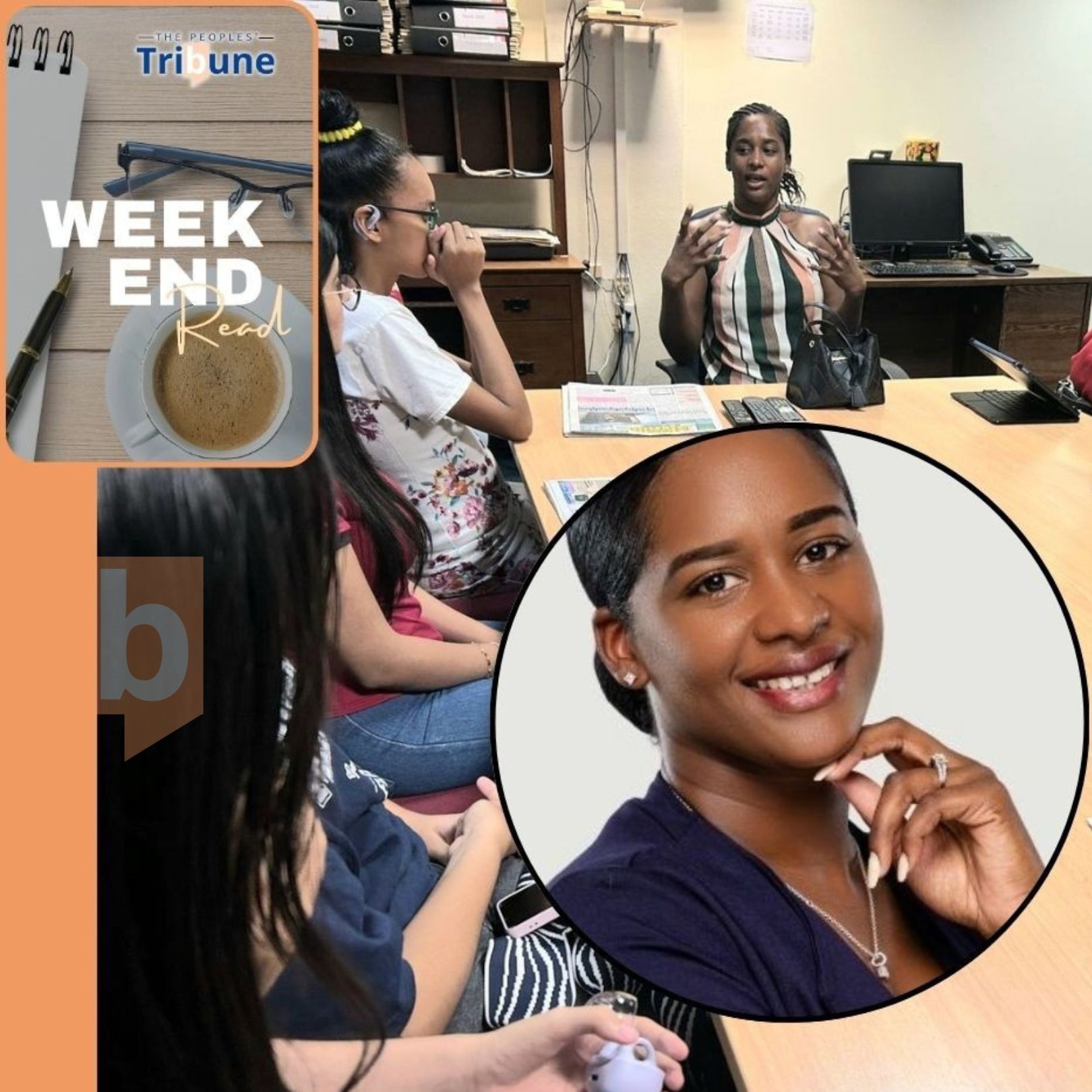Learning to Listen: Teen Times staff equip themselves on depression and suicide

As young people who manage a popular platform that exists to educate, enlighten and empower teenagers, the members of Teen Times felt they could not stay on the sidelines when it comes to depression and suicide. These are not distant “adult” topics. They show up in group chats, on social media, in school corridors, and sometimes in the stories teens tell about their own lives. The group understood that pretending the issue is too uncomfortable or too dark for young people does not protect anyone, it only keeps those who are hurting more isolated and ashamed.
The Teen Times members talk every week about issues that affect them and their friends, and mental health returns to the table again and again. Many know someone who has struggled with depression. Some have heard of suicide attempts. They know the phrase “check on your friends” and “are you OK,” but they also know that those words can feel empty if you do not understand what to look for, or what to do when a friend quietly says “no.” For them, information is not a luxury, it is a tool that can help them recognize when something is more serious than a bad day and when it is time to involve an adult or professional.
That is why Teen Times decided to educate themselves first. They did not want to act like counselors or replace trained professionals. Instead, they wanted to learn how depression can show up in real life, how suicidal thoughts can develop, and how they, as peers, can listen, support and guide someone toward proper help without losing sight of their own limits and safety. In that context, they invited Child and Adolescent Psychologist Sjemila Webster-Williams to their weekly meeting to answer questions, challenge myths and give them practical tools to carry back into their schools, homes and online spaces.

Child and Adolescent Psychologist Sjemila Webster-Williams was the special guest at Teen Times’ weekly meeting on Saturday, November 15. In recent weeks the group has been talking about mental health, especially suicide, and how teens can recognize depression in themselves and their friends. Webster-Williams took their discussion further and helped them sort through some hard questions.
She began by asking the group to think about their own understanding of suicide and of depression. One of the first points she made was the difference between sadness and depression. Sadness is an emotion that comes and goes, you can feel sad and then, with support or a change in situation, move out of it. Depression is more like a heavy state of doom or despair. A person might start out sad but then begin to spiral, connect that sadness to many other parts of life, and feel weighed down and trapped.
Webster-Williams explained that depression does not always look the same. Sometimes there are clear signs. A person who used to be bubbly and active might suddenly seem slow, tired and unkempt. At the same time, another person can appear completely fine on the outside, well dressed and smiling, while feeling deeply depressed on the inside. Pressure from school, home or relationships can push a child or teen further into this spiral, and they might even confuse ordinary sadness with depression.
She talked about “negative automatic thoughts”. When something upsetting happens, certain thoughts will show up quickly, and if they keep repeating, a person starts paying more attention to them. Over time those thoughts can feel louder and more believable. If you keep feeding them, you start to create a version of reality in your mind that you then begin to live out in daily life.
From there, Webster-Williams addressed suicidal ideation, meaning thoughts about suicide, and self harm. For some people, self harm becomes a way to cope or to feel temporary relief from intense emotions, sometimes even a brief feeling of euphoria. She also noted that some survivors of sexual abuse might react by engaging in reckless sexual behavior. This can be a way of trying to regain a sense of control after something was taken away from them.
To make things more understandable, she used the image of a balloon. Imagine your life as the balloon and all the air inside it as the stress and pressure you carry. Suicide is like one sudden action that ends everything at once. Self harm is more like poking slow leaks into the balloon, damaging it and letting out air bit by bit without bursting it completely. Both cause harm, but in different ways.
The group also spoke about generational trauma. Patterns of hurt and unhealthy behavior can pass from one generation to the next. According to Webster-Williams, the most realistic way to break that pattern is for parents and caregivers to become aware of the trauma they carry and how they might be passing it on. That kind of change usually needs honest conversation, preferably with a safe, trusted mediator who understands the situation and cares about those involved.
When it comes to helping a friend, Webster-Williams encouraged the teens to think about safety and boundaries. If you are worried about someone, it is usually better to speak to them one on one, to protect their privacy and reduce risk. At the same time, if you are very unstable or struggling with the same issues yourself, she warned that it might not be wise to try to “save” someone else. In that state you might not be able to support yourself, much less another person.
Looking to the future, she reminded the group that experiencing trauma or mental health challenges is a reason to seek help, not to stay silent. Getting a therapist or counselor is a reasonable, responsible step. She also challenged the use of words like “crazy”. That word is not a real clinical term. Every person has their own struggles, and trying to label someone as “crazy” is a lazy way of talking about pain that is actually complex and individual.
Webster-Williams stressed that anyone can play a supportive role. To counsel someone is not to fix their life, it is to listen, to empower them to make safer choices, and to guide them toward professional help when needed. Still, if you see someone going through a hard time, you are not automatically responsible for their situation. Reaching out is a choice. Your own safety and well-being matter too.
The Teen Times members left the session with a clearer sense of what depression and suicidal thoughts can look like, and with better ideas on how to respond. They learned that real support means listening, respecting boundaries, involving trusted adults or professionals and refusing to ignore mental health struggles, whether in themselves or in their friends.

